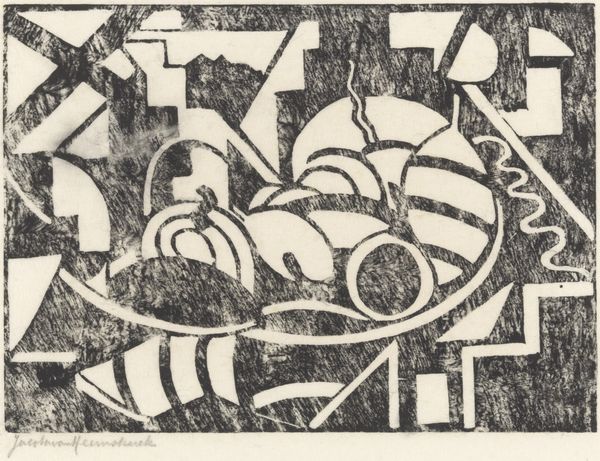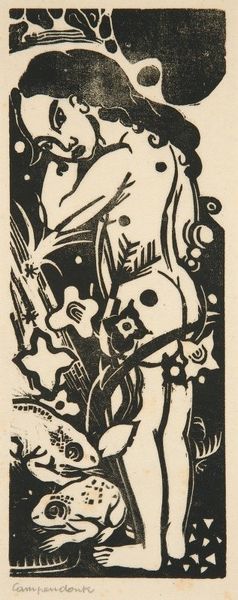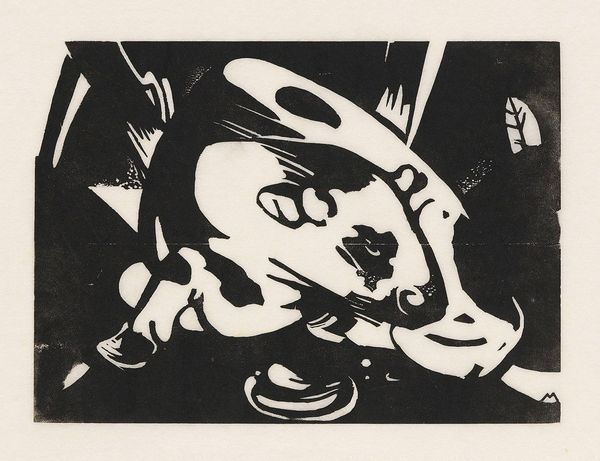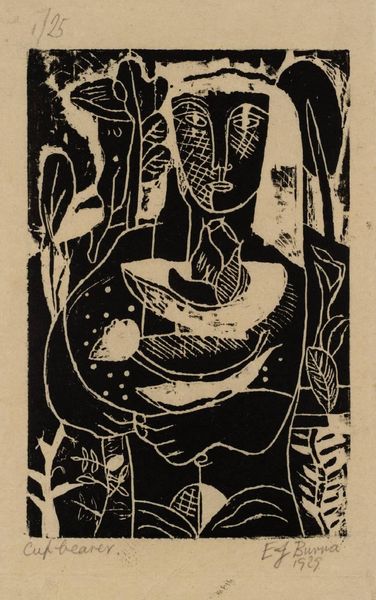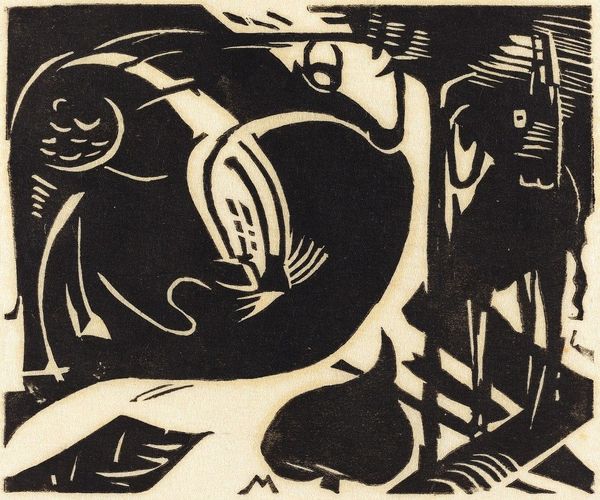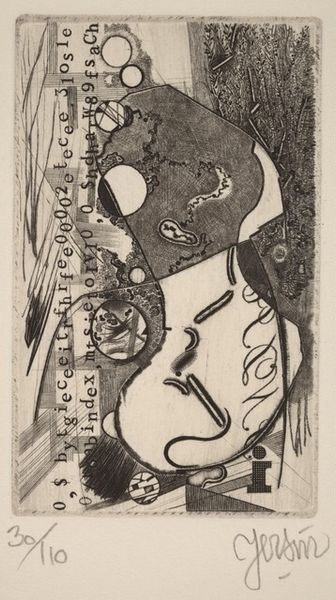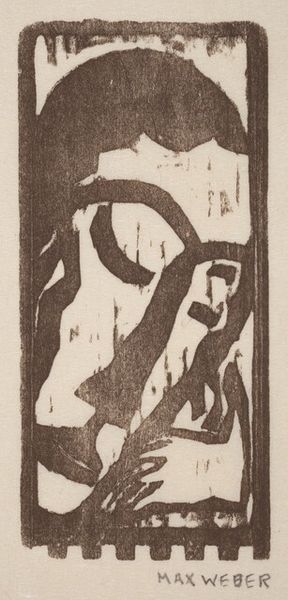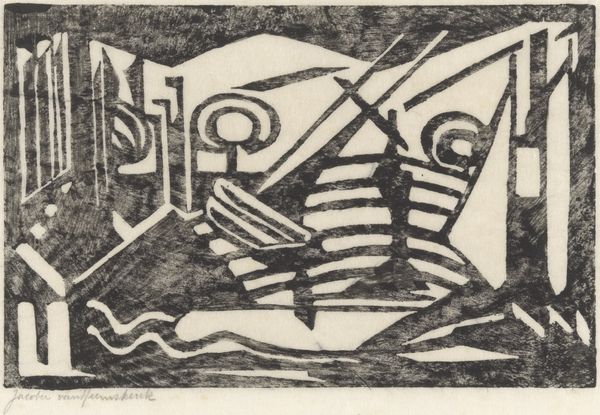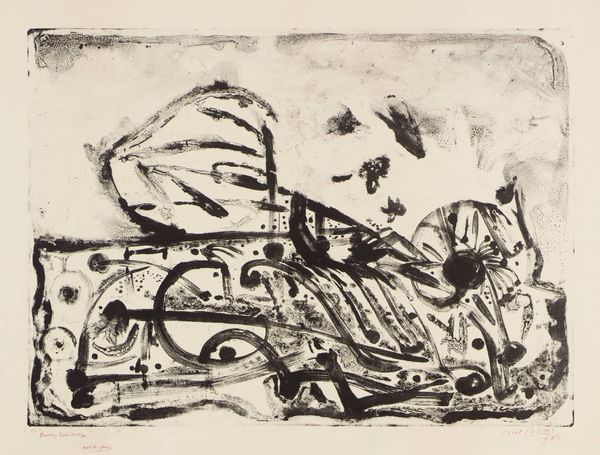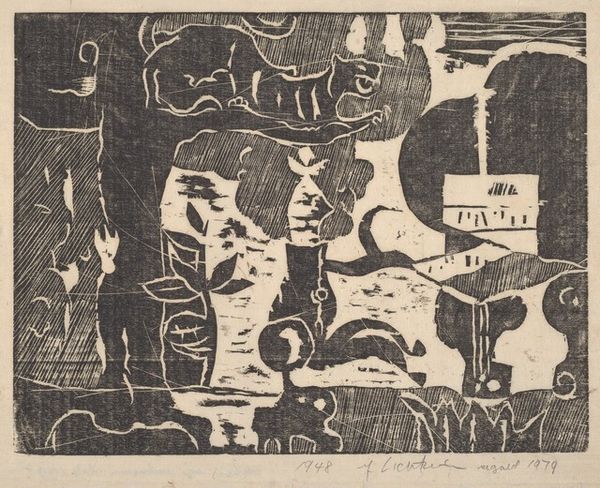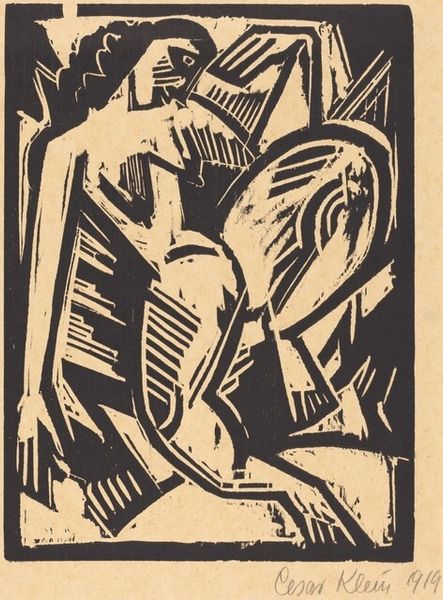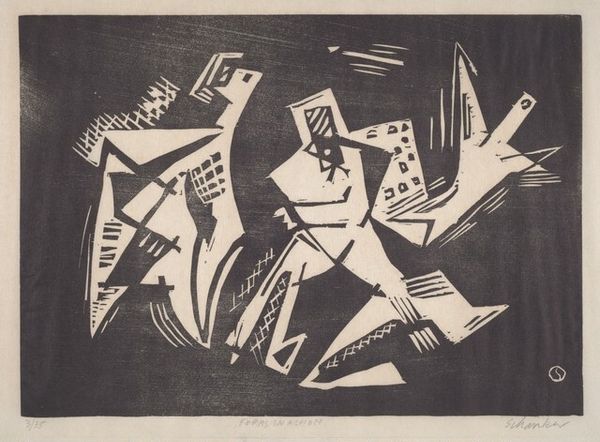
print, woodcut
# print
#
landscape
#
german-expressionism
#
figuration
#
linocut print
#
expressionism
#
woodcut
Copyright: Public Domain: Artvee
Curator: Take a moment with "Goat and Sheep," a compelling woodcut print created in 1916 by the German Expressionist artist Heinrich Campendonk. Editor: Woah, there's something primal about this, isn't there? A clash of textures, the stark black and white creating an almost violent contrast. Makes me feel restless. Curator: Indeed. The lack of color really emphasizes the raw, emotive power so characteristic of Expressionist art, which sought to convey inner feeling above accurate representation. These artists aimed to make emotional statements reflecting deep cultural anxieties around industrialization and warfare that were intensifying at that time. Editor: You know, the animals aren't just animals here; they feel symbolic. Like they’re caught between a vanishing rural past and something cold and new. Is that just me projecting? Curator: Not at all! Campendonk was known for using animal imagery to express spiritual and emotional states. Remember, the early 20th century was a turbulent period, with rapidly changing social and political landscapes. Art offered an outlet for these fears, tensions, and desires for simpler lives closer to nature, often framed around folk imagery. Editor: And there's this...disjointedness to it all. The composition feels fractured, almost cubist. Are we seeing echoes of other avant-gardes blending here? Curator: Campendonk certainly absorbed the influences of his time. You're right to observe hints of Cubism, but also think of the emotional intensity championed by groups like "Der Blaue Reiter." The angular forms, stark contrasts, and the fracturing of space serve to amplify the feeling of unease. It's not just a picture of animals, but an embodiment of inner turmoil. The placement is such that the art piece projects outwards toward the viewer. Editor: So it's about more than just portraying nature then, isn't it? It's almost a commentary on the human condition *through* nature. The animal becomes a mirror. Curator: Precisely. Campendonk harnessed the symbolic weight of these creatures, projecting emotions and cultural anxieties onto them. His rendering is deliberately stylized and distorted in order to push this effect, revealing something visceral underneath the surface of the apparent image. It pushes us to really feel. Editor: Looking at it again, I'm struck by the enduring relevance. This yearning for connection, this anxiety about the world… It's timeless. Curator: It is, isn't it? The piece reminds us that art acts like a kind of seismograph that exposes our own, internal world to the viewer and forces us to come face-to-face with what hides beneath the surface. The beauty is that it forces this reckoning by speaking its truth with no fear of the ramifications.
Comments
No comments
Be the first to comment and join the conversation on the ultimate creative platform.
